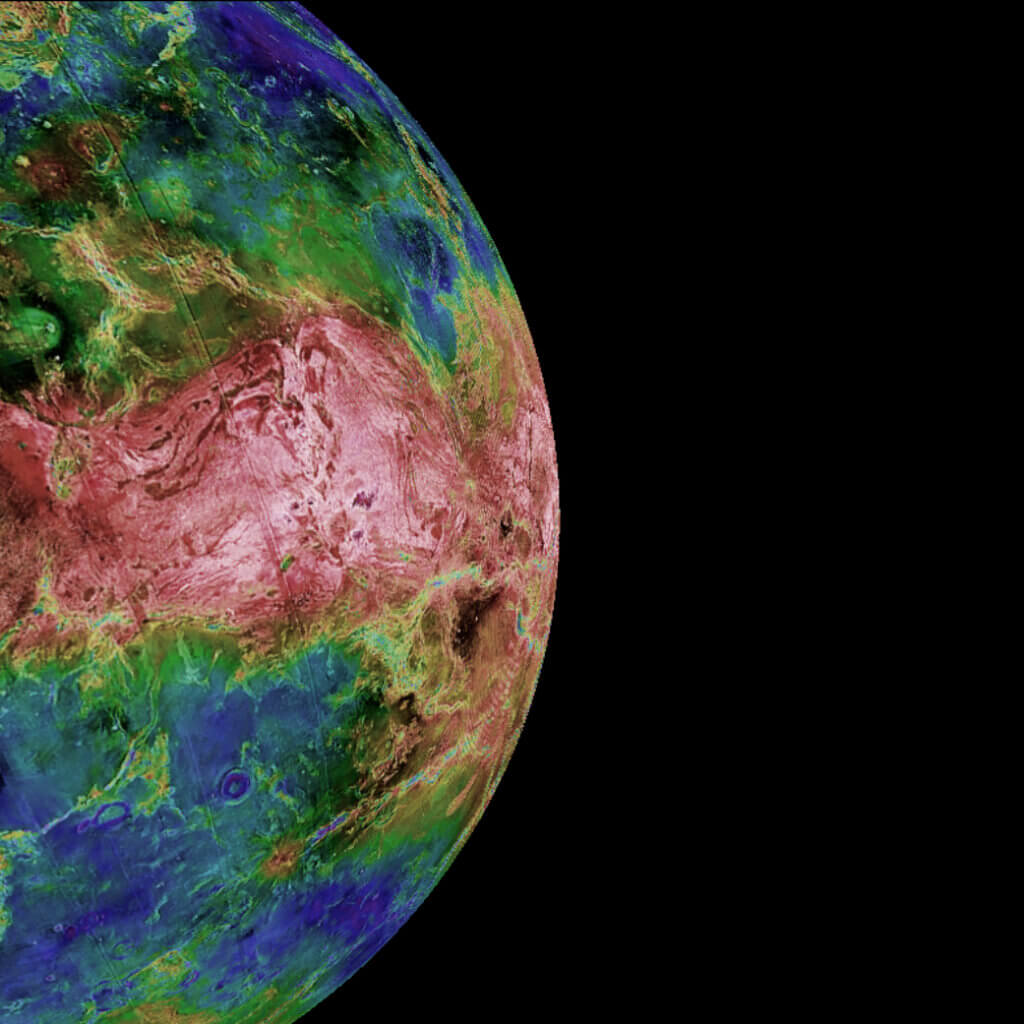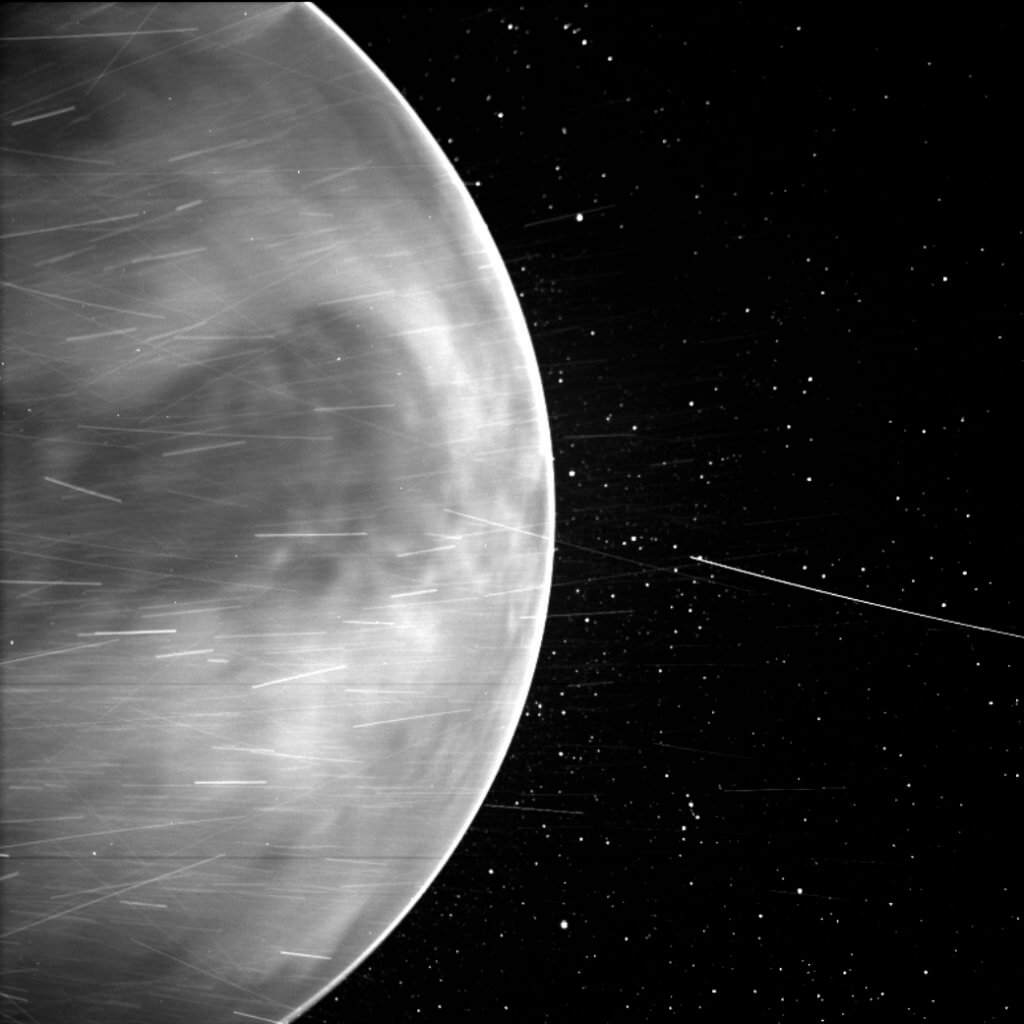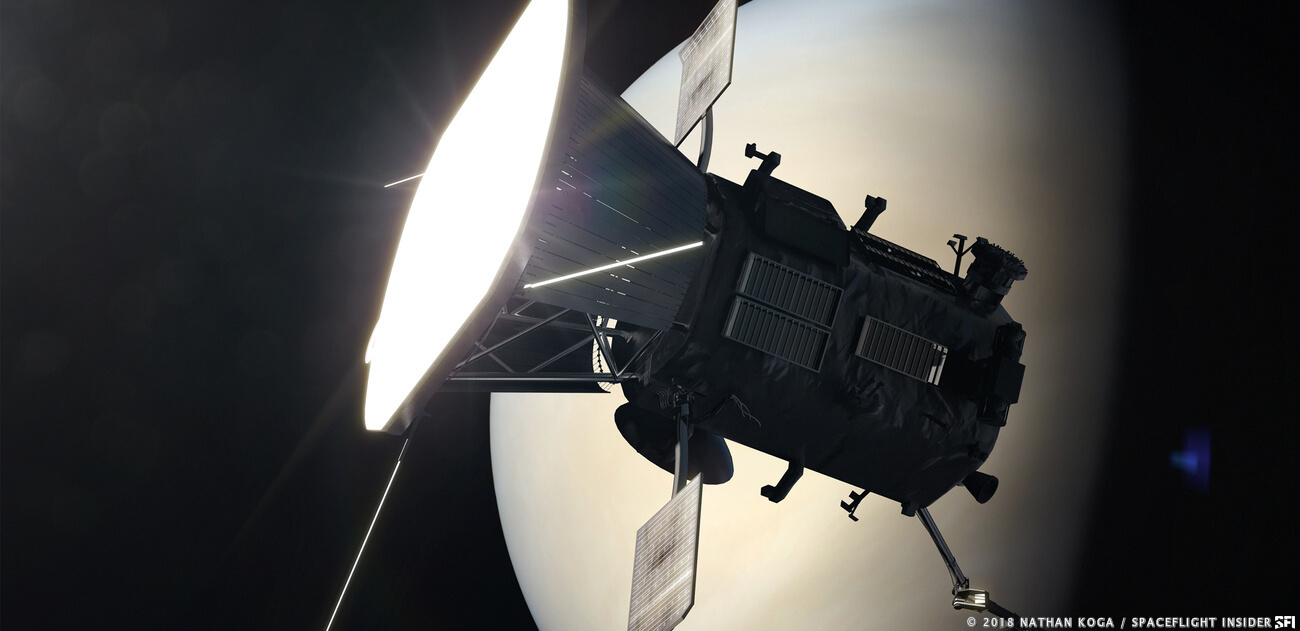NASA’s Parker Solar Probe has captured its first visible-light shots of the surface of Venus from space. The visible-light imagery will offer scientists more insights into the geology and minerals of the planet.
The surface of Venus is asphyxiated in thick clouds, making the planet slightly concealed from sight, but Parker used its Wide-Field Imager to image the entire night side of Venus in visible light as well as infrared light, exposing regions including continents, plains and plateaus. Moreover, a luminescent halo of oxygen in the atmosphere can be glimpsed encircling the planet.
“We’re thrilled with the science insights Parker Solar Probe has provided thus far,” said Nicola Fox, division director for the Heliophysics Division at NASA Headquarters. “Parker continues to outperform our expectations, and we are excited that these novel observations taken during our gravity assist maneuver can help advance Venus research in unexpected ways.”


Venus has been often called Earth’s twin, and because of the resemblances between the two planets, scientists hope to understand why Venus became inhospitable and Earth became an oasis.
Follow TechTheLead on Google News to get the news first.

















